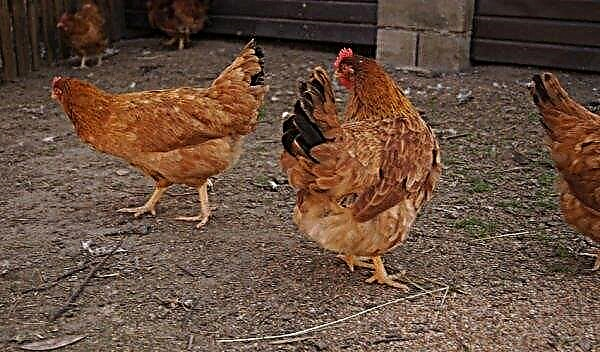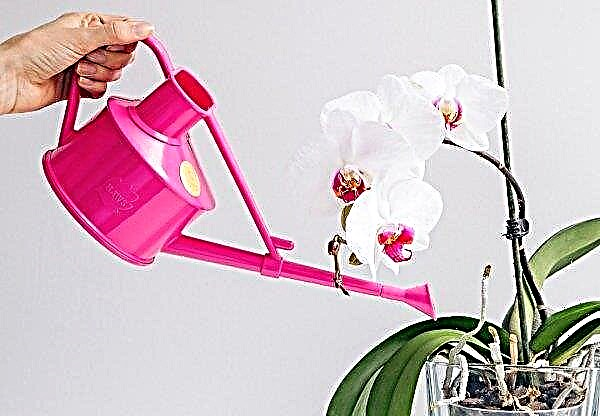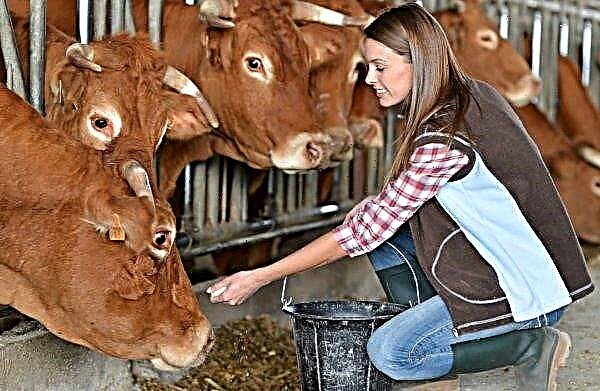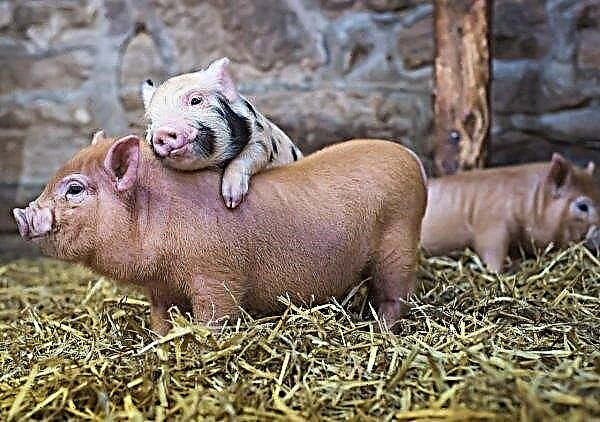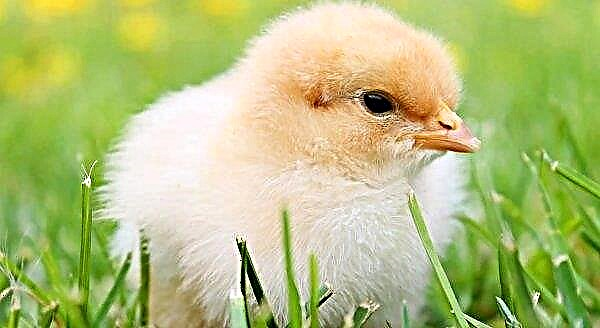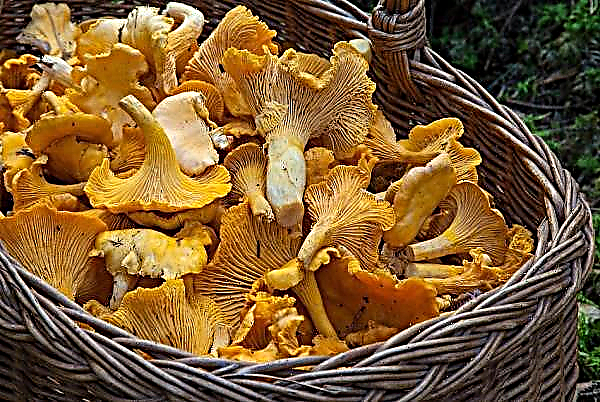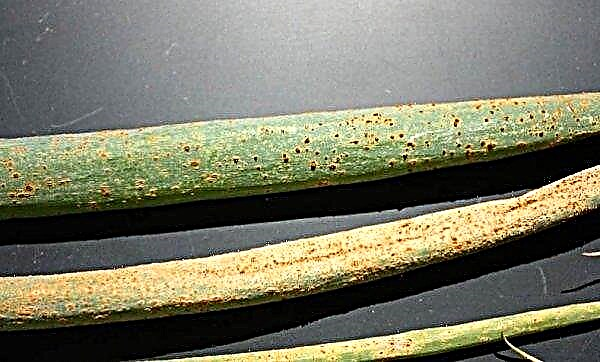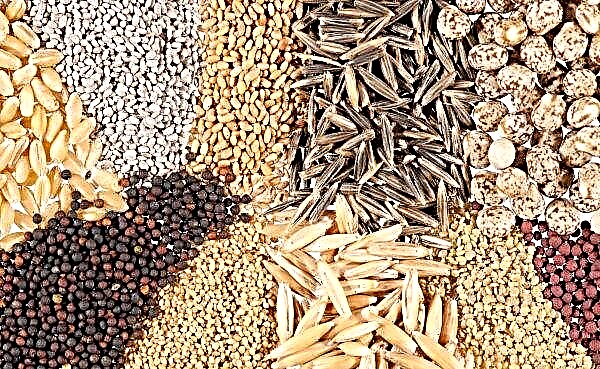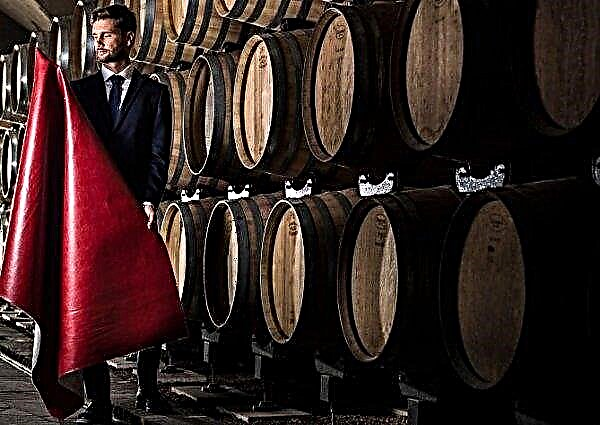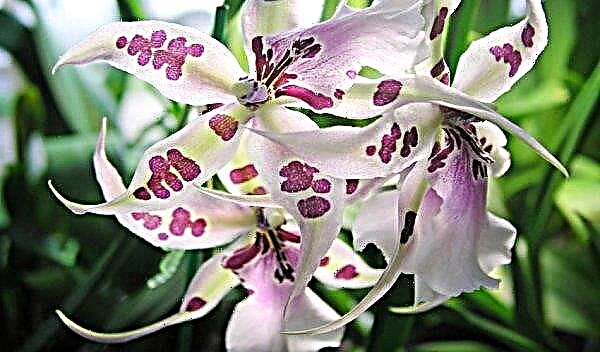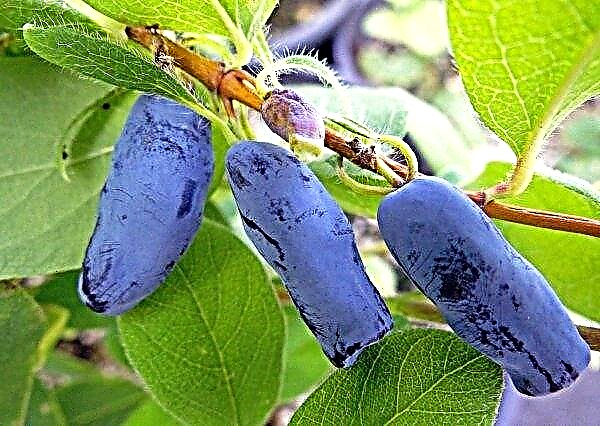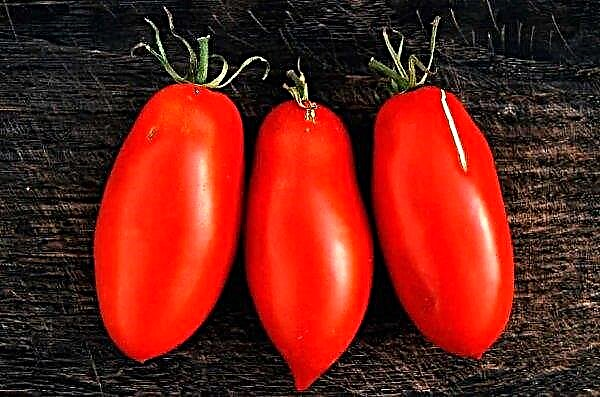Rhododendron is one of the most popular evergreen shrubs grown in Russian gardens. Given the diversity of its species, each gardener will surely be able to choose the most profitable for himself, both in terms of his appearance and taking into account the requirements for caring for the crop. The optimal solution in this case is a hybrid Ketevba rhododendron of the Album variety, which will be discussed in this article.
Grade description
Plants of the varietal variety Album (scientific name Catawbiense Album) are represented by evergreen two-meter shrubs, the genus Rhododendron from the Heather family. They are often used in landscaping summer cottages and park areas, which is largely due to their external attractiveness. The crown of plants is dense, semicircular, with a diameter of up to 1.8 m and an annual growth of 8–10 cm. Dark green, elongated ellipsoid leaf plates are leathery, with a shiny surface on top and bluish-green below, usually grow to 10 cm in length.
The bark of branches and stem can have both dark gray and brown color. The flowers of the rhododendron of the Album variety are white, bell-shaped, with olive spots on the surface of the petals. In a pin-shaped inflorescence, there are no less than 15–25 flowers, each 5–6 cm in diameter. Flowering occurs in late May or early June and lasts about a month. The root system is superficial, lies at a depth of not more than 40 cm from the soil line.
Did you know? In Japanese culture, rhododendron is still considered a "bush of temptation", since some varieties of this culture are able to secrete the substance andromedotoxin, which affects the nervous system and can cause mild intoxication.
Winter hardiness
The rhododendron of the described variety is excellent for growing in the central and southern regions of Russia, and in the presence of winter shelter it can even land in the northern region. Winter hardiness of adult crops is -30 ... -32 ° C, but immature young plants can freeze even at values up to -25 ° C.

Features of planting and care
Planting and further care of the Album rhododendron is based on the same activities as the cultivation of other species and varieties of this culture. The first thing you should pay attention to is the choice of the place of planting of young seedlings and the correct conduct of planting events, with the further organization of regular watering, top dressing and pruning. Of course, in each of these cases there will be specific features of the work, which should be known even before the acquisition of seedlings.
Video: Planting and caring for a rhododendron
Choosing a place and preparing the soil for planting
Rhododendron bushes will look great next to gazebos, benches and paths, complementing a variety of different annual and perennial crops grown on the same site. This plant tolerates shady areas well, but still it is better to plant it in bright areas. A suitable option would be the area under a decaying tree or at the wall of the building, but light partial shade can adversely affect the abundance of flowering bushes. Rhododendron does not like drafts, so in the open northern areas you will have to take care of additional protection from cold winds.

As for the soil composition for the crop, it’s better to pay attention to a moist, loose substrate rich in organic matter. It is possible to prepare the soil mixture from three parts of brown brown peat, two parts of rotted coniferous litter and one part of coarse river sand. You can’t add lime, otherwise the young plant will die soon after planting.
Important! Before planting seedlings in a prepared place, they should be soaked in water for several hours so that the roots are saturated with moisture.
Dates and rules of landing
You can start landing activities both in spring (late May or early April), and in autumn (September to November). The latter option is suitable for the central and southern parts of Russia, but if rhododendron is grown in the northern territories, then spring planting is preferable, when frosts recede and the plant has enough time to adapt until the next winter.
The algorithm and planting rules for the hybrid Album cultivar provide for the following sequential actions:
- Three to four weeks before the proposed planting, they need to arrange suitable planting pits with a diameter of at least 60 cm and a depth of 40 cm.
- On the day of planting, fill in the hole of the fertile mixture prepared according to the above recipe and form a small hill out of it.
- Place the purchased seedling in the center of this hill and smoothly spread all its roots so that they spread evenly over the entire surface of the earthen pillow.
- Carefully fill in the roots of the plant with the remaining soil, compact the substrate in its near-stem circle and water the plantations abundantly. If necessary, you can additionally mulch seedlings with peat or sawdust.
 If the rhododendron seedling Catawbiense Album was previously grown in closed pots, the depth of its planting in an open area should correspond to the previous values of the deepening
If the rhododendron seedling Catawbiense Album was previously grown in closed pots, the depth of its planting in an open area should correspond to the previous values of the deepening
Watering
All varieties of rhododendrons are characterized by increased hydrophilicity, therefore, for normal growth and development of plant varieties, regular watering is a mandatory aspect of caring for the crop. In the first year of growing a young plant, the regularity of the procedure should be at least 1-2 times every 7 days, with a flow rate of 20-30 liters of fluid per plant. For adult shrubs, such a moistening frequency is permissible only in the dry summer seasons, although the amount of liquid introduced into the soil in this case will be increased to 50 liters. For optimal distribution of water in the area, it is better to pour it in portions, half a bucket, waiting until the previous part is well absorbed.
Fresh tap water for irrigation of rhododendrons is not suitable, therefore, in the absence of river or collected rainwater, it is first sedimented for several days and only then poured under the bushes. With a very rigid composition, it is recommended to add 2 tbsp to the water. tablespoons of acetic acid (9%) or 4 g of citric acid dissolved in 10 l of liquid.

In order not to acidify it and maintain the soil in the most suitable condition for rhododendron, colloidal sulfur can be added to the near-trunk zone, based on 40 g of the drug for one young plant and at least 80 g for an adult. Such fertilizer is applied to the near-stem circle of the bush about 1-2 times a year. Without this procedure, the soil can become too alkaline and then rhododendron is threatened with the development of chlorosis.

Fertilizing, fertilizer
During the first year of cultivation, the bush will have enough nutrients introduced during planting, so additional feeding is not required. Starting from the second year, mineral compositions become relevant: In early spring it is useful to feed the plants with ammonium nitrate (20 g per 1 liter of liquid), and in August, add potassium sulfate to the soil, which will help the culture increase its resistance to the coming winter frosts.
There are also specially developed vitamin-mineral complexes for rhododendrons, azaleas and other flowering shrub plants. (for example, a drug from the company "Greenword"). The recommended dosage and their application rates are always indicated by the manufacturer on the packaging.
Whatever nutrient composition for plants you choose, it is advisable to perform top dressing after the next moistening of the soil (natural precipitation or artificial irrigation). An alternative would be a combination of regular watering and fertilizing the soil, which will also allow shrubs to better absorb all the micro and macro elements from the finished fertilizer.

Pruning
Despite the fact that the Ketevba rhododendron belongs to the decorative group of plants, the forming pruning is not relevant in this case. In the early spring, only the sanitary removal of broken, shrunken and frozen shoots is performed.and after flowering, all faded buds are removed from the bush.

Winter preparation
Preparing the described plant for the cold season of the year will not be difficult for most gardeners, especially when it comes to adult bushes grown in the southern or central regions of the country.
Video: Is it Worth Afraid of Winter Growing Rhododendron
Only northern rhododendrons or young plants planted this year will need special shelter, although even in this case, preliminary preparation of the bush is carried out according to the generally accepted scheme of actions:
- To begin with, the plant is eliminated from plant residues, watered well, and then its trunk area is mulched with a thick layer of wood sawdust.
- In the future, around the connected shoots of the bush, wooden supports are installed and any selected covering material is pulled over them.
 Alternatively, spruce branches can be used to shelter the rhododendron, but to improve the warming of the plant, it is worthwhile to heat another layer of snow on top of the natural material
Alternatively, spruce branches can be used to shelter the rhododendron, but to improve the warming of the plant, it is worthwhile to heat another layer of snow on top of the natural material
Breeding
The propagation of a hybrid rhododendron of the Album variety can be performed in one of three ways: by sowing seeds, by planting cuttings or cuttings. The choice of a specific option will depend on the availability of a sufficient amount of time and diligence by the gardener.
- Seeds plants are sown in boxes with prepared soil (the composition of the nutrient mixture may correspond to the composition of the mixture in open soil), trying to perform the procedure mainly in mid-January. It is not worthwhile to deepen the seeds deep into the substrate, it is enough to simply spread the seeds on the surface and only slightly powder the soil. For seedlings to germinate in the room, it is necessary to maintain the temperature within + 20 ° С, regularly moistening the soil under the plantings from the spray gun. Planting the obtained sprout in open ground is performed no earlier than the second year of growing in a container, with the root neck remaining above the surface of the substrate.
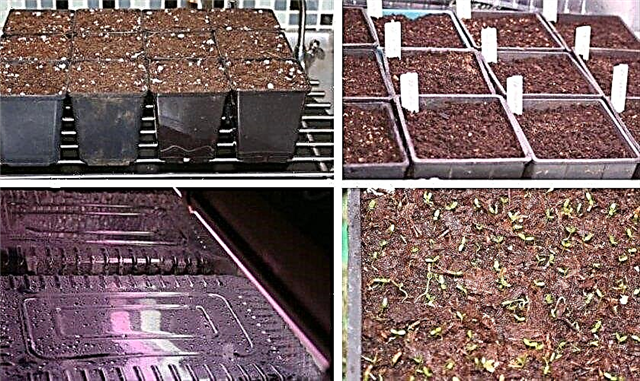
- Cuttings Rhododendron can be carried out throughout the summer period, and green or slightly lignified shoots with a length of not more than 10 cm are usually used as planting material. Before planting, all leaves except one or two upper pairs are removed from the prepared section, so that the stalk is better rooted , the lower cut is made oblique, starting to stretch the knife blade immediately from under the kidney. To root the cutting, it is first lowered into the stimulator of root formation by a slice, and then stuck into the prepared substrate. The development of the segment occurs rather slowly, therefore, the young plant will be ready for planting on the site no earlier than after 2-3 years of growing the house. Of course, cuttings are often planted at a constant place of growth after a year, but the root system by this time is not always well developed and young plants may not take root.
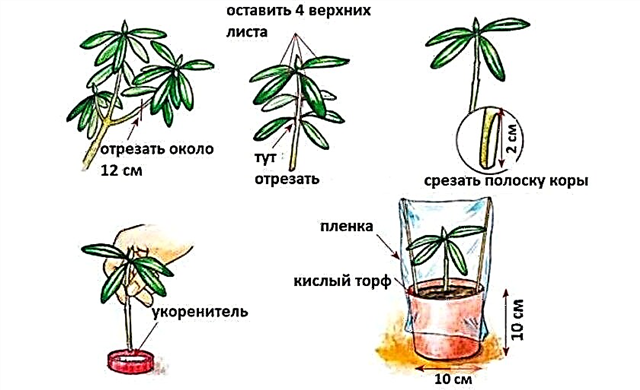
- When propagating by layering, part of the cortex is removed from the chosen healthy shoot and dug up with earth, securing it with a special bracket for better fixation. The upper part of the shoot is left above the soil surface and if the layering is provided with sufficient nutrition and moisture, then in a year it will be possible to separate it from the mother bush and plant it as an independent seedling.
Based on the practice of many gardeners, the most convenient option for propagating the Katevbinsky rhododendron on the site will be the cultivation of layering, since it is precisely this method that is deservedly considered the fastest and easiest, especially if a suitable mother plant is already growing in the territory to obtain planting material.
Diseases and Pests
Katevbinsky rhododendron Album has increased resistance to characteristic ailments and pests of cultureHowever, like all hybrid plants. However, excessively alkaline soil can provoke plant chlorosis, which is manifested in the yellowing of their leaf plates. To prevent and combat this ailment, it is important to periodically acidify the soil, preventing or localizing the ailment. All parts of the plant affected by the disease must be removed in a timely manner, if possible burning them. The same applies to rotten places, which often become so due to waterlogging of the substrate.

Of the pests, when growing rhododendron, there is every chance to face spider mite, acacia pseudoscutis, rhododendron bug and plow slug. Sometimes the plants are affected weevils and thrips, each individual of which sucks juices from leaves and young shoots of plants, leading to their rapid death. To combat harmful insects, it is worth using insecticidal drugs, such as Actellik, Vertimek, or Aktara. Dosage and rules for the use of formulations are always marked by the manufacturer on the packaging.
Did you know? The distribution of rhododendrons around the world as cultivated plants began in the XVII century from the territory of England. Moreover, in the same country, the first hybrid was obtained from crossing an evergreen Pontic variety of this plant with a deciduous hollow-flowered version of the culture.
Landscape design application
When refining the garden, the rhododendron of the described variety can be planted both in single and group plantings, in particular during the design of stony gardens and certain territories in the oriental style. Of shrubbery plants, the best background for rhododendron will be lilac, mock orange, large euonymus, varietal cystic fruit, spirea and barberry. In addition to rhododendron, coniferous crops can be planted with mountain pines, spruce and tsugi, and from herbaceous plants, the shrub combines well with irises, pachisander, varietal varieties of lantern and tenacious.

Providing optimal conditions for growth and development to the Ketevbinsk rhododendron, lush flowering decorative bushes will please you for more than a dozen years, especially since caring for them will not be difficult. Having studied all the features of growing a plant in advance, there is every chance of avoiding problems with their cultivation in the future.



